Welcome to our comprehensive guide to the distributed database! In this article, we will delve into the fascinating world of distributed database technology and explore its various aspects, use cases, advantages, and challenges. Whether you are a beginner or an experienced professional in the field, this guide aims to provide you with valuable insights and knowledge about distributed databases. So, let’s get started!
- What is a Distributed Database?
- Advantages of Distributed Databases
- Challenges of Distributed Databases
- Types of Distributed Databases
- Use Cases of Distributed Databases
- Distributed Database Architecture
- Distributed Query Processing
- Distributed Concurrency Control
- Distributed Database Replication
- Consistency Models in Distributed Databases
- Distributed Database Transactions
- Data Partitioning in Distributed Databases
- Distributed Database Security
- Case Study: Google Spanner
- Popular Distributed Database Systems
- Comparison of Distributed Database Systems
- FAQs
- Conclusion
What is a Distributed Database?
A distributed database refers to a collection of multiple interconnected databases, spread across different physical or logical locations, that work together as a unified system. It allows data to be stored and accessed from multiple nodes, enabling distributed data processing and management. In simpler terms, a distributed database is like a distributed network of databases that cooperate to provide a seamless and efficient data storage and retrieval mechanism.
Distributed databases are designed to overcome the limitations of traditional centralized databases by distributing data across multiple nodes, providing improved scalability, fault tolerance, and high availability. They are commonly used in large-scale applications where data needs to be accessed and processed in a distributed manner.
Advantages of Distributed Databases
Distributed databases offer several advantages over centralized databases, making them an attractive choice for various applications. Let’s explore some of the key advantages below:
Scalability
Distributed databases excel in handling massive amounts of data and high workloads. By distributing data across multiple nodes, they can scale horizontally, allowing for increased storage capacity and processing power. As the demand for data grows, more nodes can be added to the system, ensuring scalability without compromising performance.
High Availability
One of the primary goals of distributed databases is to ensure high availability of data. With data replicated across multiple nodes, even if one or more nodes fail, the system can continue to function without any interruption. This redundancy ensures that data remains accessible and minimizes the risk of downtime.
Fault Tolerance
Distributed databases are designed to be fault-tolerant. In the event of a node failure or network issue, the system can seamlessly redirect queries to other available nodes, ensuring continuous data availability. By replicating data across multiple nodes, distributed databases can recover from failures and maintain data integrity.
Improved Performance
Distributed databases can improve overall system performance by distributing the workload across multiple nodes. With data stored closer to the point of use, query response times can be significantly reduced. Additionally, parallel processing capabilities enable faster data retrieval and analysis, leading to enhanced performance.
Geographic Distribution
Distributed databases are well-suited for applications that require data to be geographically distributed. By placing data closer to end users, organizations can reduce network latency and improve user experience. This is particularly beneficial for globally distributed systems and applications with a large user base.
Challenges of Distributed Databases
While distributed databases offer numerous advantages, they also come with their own set of challenges. Let’s discuss some of the key challenges below:
Data Consistency
Maintaining data consistency is a significant challenge in distributed databases. Since data is distributed across multiple nodes, ensuring that all replicas are consistent and up-to-date can be complex. Synchronizing data updates and resolving conflicts requires sophisticated mechanisms and careful design.
Network Latency
In distributed databases, data retrieval and updates often require communication between nodes over a network. Network latency can impact the performance of distributed systems, especially when nodes are geographically dispersed. Minimizing network latency and optimizing data transfer is crucial for achieving high performance.
Security and Privacy
Distributed databases introduce additional security challenges. Protecting data from unauthorized access and ensuring data privacy becomes more complex in a distributed environment. Implementing robust security measures, encryption, and access controls is essential to safeguard sensitive information.
Complex System Management
Managing a distributed database system can be more complex compared to a centralized system. Configuration, monitoring, and troubleshooting distributed systems require specialized knowledge and tools. The system must be carefully designed and maintained to ensure optimal performance and reliability.
Data Partitioning and Replication
Deciding how to partition data across nodes and determining replication strategies can be challenging. Incorrect partitioning or replication schemes can lead to uneven data distribution, performance bottlenecks, or inconsistent data. Choosing the right partitioning and replication strategies is critical for achieving optimal system performance.
Data Integrity and Recovery
Ensuring data integrity and facilitating data recovery in distributed environments is vital. The system must provide mechanisms to detect and correct data inconsistencies, handle failures, and recover data in case of node failures. Implementing robust data integrity and recovery mechanisms is crucial to maintaining system reliability.
Types of Distributed Databases
Distributed databases can be categorized into different types based on how data is distributed and managed. Let’s explore the three main types:
Replicated Databases
In replicated databases, data is fully replicated across multiple nodes. Each node stores a complete copy of the entire database. This replication ensures high availability and fault tolerance, as any node can serve read and write requests. However, keeping replicas consistent and synchronized can be challenging.
Partitioned Databases
In partitioned databases, data is divided into partitions, and each partition is assigned to a specific node. Each node is responsible for managing a subset of the data. This partitioning allows for horizontal scaling and efficient data retrieval, as queries can be directed to specific nodes based on the data they hold. However, partitioning requires careful consideration to ensure even data distribution and optimal query performance.
Federated Databases
Federated databases, also known as distributed heterogeneous databases, consist of multiple autonomous databases that are loosely interconnected. Each database retains its own data and schema, but a federated database system provides a unified interface to access and query data across multiple databases. Federated databases are commonly used when integrating data from multiple sources or when different organizations need to collaborate while maintaining separate databases.
Use Cases of Distributed Databases
Distributed databases find applications in various industries where data processing and management require distributed capabilities. Let’s explore some common use cases:
E-commerce Applications
E-commerce platforms often deal with large volumes of data, including product catalogs, customer information, and order details. Distributed databases enable efficient data management and scalability to handle the demands of high traffic, real-time inventory updates, and seamless customer experiences.
Social Media Platforms
Social media platforms generate enormous amounts of user-generated content, such as posts, comments, and media files. Distributed databases allow these platforms to handle the rapid growth of data, distribute content across different data centers, and provide reliable and responsive user experiences.
Financial Systems
Financial institutions rely on distributed databases to manage transactions, customer accounts, and risk analysis. Distributed databases offer the necessary scalability, high availability, and fault tolerance required for handling large volumes of financial data while ensuring data integrity and security.
Distributed Database Architecture
Distributed databases can be implemented using different architectural models, each with its own characteristics and advantages. Let’s explore two common architectural models:
Client-Server Model
The client-server model is a widely used distributed database architecture. In this model, clients communicate with a central server that manages the database. Clients send requests to the server, which processes them and returns the results. This model offers simplicity and centralized control but can be a single point of failure.
Peer-to-Peer Model
The peer-to-peer (P2P) model is a decentralized approach to distributed databases. In this model, all nodes participate in the data management process and can communicate directly with each other. Each node acts as both a client and a server, sharing resources and responsibilities. P2P models offer increased fault tolerance but can be more complex to manage.
Distributed Query Processing
Query processing in distributed databases involves optimizing and executing queries across multiple nodes. Let’s discuss two key aspects of distributed query processing:
Query Optimization
Query optimization aims to find the most efficient execution plan for a given query. In distributed databases, query optimization becomes more complex due to data distribution, network latency, and the involvement of multiple nodes. Techniques such as cost-based optimization and parallel query processing are used to minimize query response times.
Query Execution
Once the query optimization phase is complete, the query execution phase begins. The distributed database system coordinates the execution of the query across multiple nodes, ensuring data retrieval, processing, and aggregation are performed accurately. Techniques like data partitioning and parallel processing are used to achieve efficient query execution.
Distributed Concurrency Control
Concurrency control is crucial to maintain data consistency in distributed databases where multiple transactions can access and modify the same data concurrently. Let’s explore two common techniques for distributed concurrency control:
Two-Phase Locking
Two-Phase Locking (2PL) is a widely used technique for concurrency control in distributed databases. It ensures serializability by acquiring and releasing locks on data items. The first phase involves acquiring all necessary locks, and the second phase involves releasing the locks. This technique prevents conflicts and ensures transaction isolation.
Timestamp Ordering
Timestamp Ordering is another technique used for concurrency control in distributed databases. Each transaction is assigned a unique timestamp, and a timestamp ordering protocol determines the order in which transactions are executed. This technique allows for concurrent execution of transactions while maintaining data consistency.
Distributed Database Replication
Replication plays a crucial role in distributed databases to ensure fault tolerance, high availability, and improved performance. Let’s explore two common replication strategies:
Master-Slave Replication
In master-slave replication, a single master node is responsible for accepting write requests and propagating the changes to one or more slave nodes. The slaves maintain a copy of the data, ensuring fault tolerance and read scalability. However, writes can only be performed on the master, limiting write scalability.
Multi-Master Replication
In multi-master replication, multiple nodes can accept write requests and propagate changes to other nodes. Each node acts as both a master and a slave, allowing for writes to be performed on any node. This strategy provides better write scalability but introduces complexities in conflict resolution and data consistency.
Consistency Models in Distributed Databases
Consistency models define the behavior of a distributed database regarding data consistency and the ordering of operations. Let’s explore two common consistency models:
Strong Consistency
Strong consistency guarantees that every read operation in a distributed database returns the most recent write or an error. To achieve strong consistency, distributed systems often employ mechanisms such as distributed locking or consensus algorithms. Strong consistency ensures that the database behaves as if it were a single, centralized system.
Eventual Consistency
Eventual consistency allows for temporary inconsistencies between replicas that eventually converge and become consistent. In distributed systems, achieving strong consistency can impact performance and availability. Eventual consistency relaxes the consistency requirements, enabling higher scalability and availability at the cost of potential temporary data inconsistencies.
Consistent Hashing
Consistent hashing is a technique used in distributed databases to determine how data is distributed across nodes. It provides a way to map data items to nodes in a consistent manner, even when nodes are added or removed from the system. Consistent hashing enables efficient data partitioning and load balancing in distributed environments.
Distributed Database Transactions
Transactions are fundamental to maintaining data integrity in distributed databases. Let’s explore some key concepts related to distributed database transactions:
ACID Properties
ACID (Atomicity, Consistency, Isolation, Durability) properties are a set of properties that guarantee the reliability of transactions in a distributed database system. Atomicity ensures that a transaction is treated as a single, indivisible unit of work. Consistency ensures that transactions bring the database from one valid state to another. Isolation ensures that concurrent transactions do not interfere with each other. Durability ensures that once a transaction is committed, its effects are permanent.
Distributed Transaction Protocols
Distributed transaction protocols facilitate the coordination and execution of transactions in distributed environments. Two commonly used protocols are the Two-Phase Commit (2PC) protocol and the Three-Phase Commit (3PC) protocol. These protocols ensure that all participating nodes agree on the outcome of a transaction and maintain data consistency across the distributed system.
Data Partitioning in Distributed Databases
Data partitioning is the process of dividing data across multiple nodes in a distributed database. Let’s explore three common data partitioning strategies:
Horizontal Partitioning
Horizontal partitioning involves dividing a database table into multiple parts based on rows. Each partition contains a subset of the data. Horizontal partitioning is useful when the dataset is large, and different parts of the data can be accessed independently. It allows for parallel processing and improves query performance.
Vertical Partitioning
Vertical partitioning involves dividing a database table into multiple parts based on columns. Each partition contains a subset of columns for the data. Vertical partitioning is useful when different parts of the data are accessed independently or when certain columns are accessed more frequently than others. It can improve query performance by minimizing the amount of data accessed.
Hybrid Partitioning
Hybrid partitioning combines both horizontal and vertical partitioning strategies to optimize data distribution. It allows for flexible partitioning based on the characteristics of the data and the access patterns. Hybrid partitioning provides a balance between data independence, parallel processing, and query performance.
Distributed Database Security
Security is of utmost importance in distributed databases to protect sensitive data from unauthorized access. Let’s explore some key aspects of distributed database security:
Authentication and Authorization
Distributed databases employ authentication and authorization mechanisms to ensure that only authorized users can access the data. Users are authenticated through credentials or digital certificates, and access controls are enforced to restrict data access based on user roles and privileges. Secure authentication protocols, such as SSL/TLS, are used to establish secure connections between clients and servers.
Encryption and Data Privacy
Encryption is crucial for protecting data confidentiality in distributed databases. Sensitive data can be encrypted at rest and during transmission to prevent unauthorized access. Encryption techniques such as symmetric encryption, asymmetric encryption, and hashing algorithms are employed to ensure data privacy and integrity.
Case Study: Google Spanner
Google Spanner is a globally distributed database system developed by Google. Let’s explore some key aspects of Google Spanner:
Overview of Google Spanner
Google Spanner is a horizontally scalable and globally distributed database designed to handle massive amounts of structured data. It provides strong consistency, high availability, and fault tolerance. Spanner is used internally by Google for various applications, including Google AdWords and Google Play.
Architecture and Features
Google Spanner utilizes a distributed storage system called Colossus and a distributed query processing engine. It uses TrueTime, a synchronized clock system, to achieve global consistency. Spanner provides SQL-like query capabilities and supports distributed transactions. It allows for automatic data partitioning and replication across multiple data centers worldwide.
Popular Distributed Database Systems
Several distributed database systems are widely used in various industries. Let’s explore some popular examples:
Apache Cassandra
Apache Cassandra is a highly scalable and decentralized NoSQL database system. It provides high availability, fault tolerance, and linear scalability. Cassandra’s architecture is based on a ring-based data model and a peer-to-peer distribution scheme. It is widely used in applications that require high write throughput and low latency.
Amazon DynamoDB
Amazon DynamoDB is a managed NoSQL database service provided by Amazon Web Services (AWS). It offers automatic scaling, high availability, and low latency. DynamoDB is designed for applications that require high performance at any scale. It provides features such as automatic data partitioning, automatic backups, and in-memory caching.
MongoDB
MongoDB is a document-oriented NoSQL database that provides distributed capabilities. It offers scalability, high availability, and flexible data modeling. MongoDB’s architecture allows for horizontal scaling by sharding data across multiple nodes. It is commonly used in applications that require flexible data structures and real-time analytics.
Comparison of Distributed Database Systems
Different distributed database systems have varying characteristics and trade-offs. Let’s compare some key aspects:
Performance
The performance of distributed database systems can vary based on factors such as data distribution, query processing techniques, and indexing mechanisms. Each system has its own strengths and optimizations. It is important to evaluate the specific requirements of an application to determine which system provides the best performance.
Scalability
Scalability is a critical factor for distributed databases. Systems like Apache Cassandra and Amazon DynamoDB are designed to scale horizontally by adding more nodes to the cluster. MongoDB provides a flexible scaling model, allowing for horizontal and vertical scaling. Understanding the scalability requirements of an application is crucial when choosing a distributed database system.
Consistency Models
Different distributed database systems offer varying consistency models. Some systems, like Google Spanner, provide strong consistency guarantees, while others, like Cassandra, offer eventual consistency. It is essential to consider the consistency requirements of an application when selecting a distributed database system.
FAQs
Here are some frequently asked questions about distributed databases:
- What is a distributed database? A distributed database is a collection of interconnected databases spread across different locations, working together as a unified system. It allows for data storage and access from multiple nodes, providing improved scalability, fault tolerance, and high availability.
- How does a distributed database differ from a centralized database? In a centralized database, data is stored and managed in a single location, whereas a distributed database spans multiple locations and nodes. Distributed databases offer advantages such as scalability, fault tolerance, and high availability, but they also come with challenges related to data consistency and network latency.
- What are the advantages of using a distributed database? Distributed databases offer advantages such as scalability, high availability, fault tolerance, improved performance, and the ability to handle geographically distributed data. They are well-suited for large-scale applications with high data processing requirements.
- Are there any challenges associated with distributed databases? Yes, distributed databases come with challenges such as data consistency, network latency, security, complex system management, data partitioning, and ensuring data integrity and recovery. Overcoming these challenges requires careful design and the use of appropriate techniques and mechanisms.
- Which industries benefit the most from distributed database technology? Industries such as e-commerce, social media, finance, and any industry dealing with large volumes of data and high workloads can benefit from distributed database technology. Distributed databases enable efficient data management, scalability, and high availability, which are crucial in these industries.
- What are the key components of a distributed database system? Key components of a distributed database system include data nodes, which store and manage data, query processors, which handle query execution, a communication network, which enables communication between nodes, and coordination mechanisms for distributed transactions and data replication.
Conclusion
In conclusion, distributed databases play a vital role in modern data management and processing. They offer scalability, high availability, fault tolerance, and improved performance for applications dealing with large volumes of data. However, they also present challenges related to data consistency, network latency, and security. Understanding distributed databases’ characteristics, advantages, and challenges is crucial when designing and implementing robust and efficient data systems.
Businesses can achieve seamless data management, efficient processing, and enhanced user experiences by leveraging distributed database technology. Whether it’s e-commerce, social media, finance, or other industries, distributed databases provide the foundation for scalable and reliable data infrastructure.







Leave a Reply